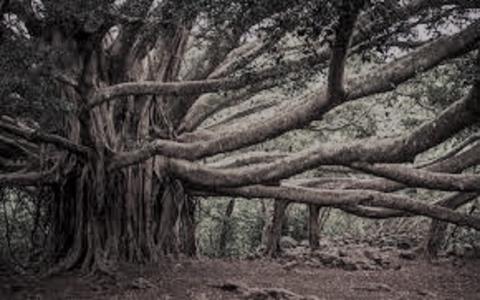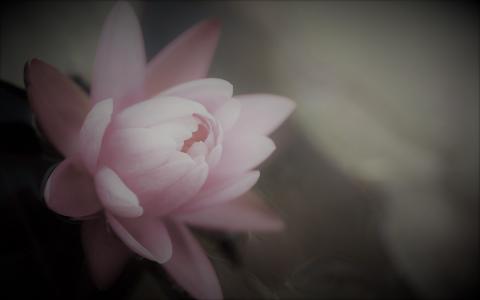January 2023

ನವೋದಯದಿಂದ ಈಚೆಗೆ ಕಾಣಲು ಅಸಂಭವವೇ ಎನಿಸುವಷ್ಟರ ಮಟ್ಟಿಗೆ ವಿರಳವಾದ ಕರ್ಷಣಜಾತಿಯ ಸೀಸಪದ್ಯಕ್ಕೆ ಮಾದರಿಗಳಾಗಿ ನನ್ನ ಅವಧಾನದ ಎರಡು ಉದಾಹರಣೆಗಳನ್ನು ಗಮನಿಸಬಹುದು:
ಕಾಳರಾತ್ರಿಗಳಲ್ಲಿ ಕದವ ತಟ್ಟುವ ಭಾವ-
ಜಾಲಂಗಳಲ್ಲಿರ್ಪ ಜೀವನವನು
ಚಂಡಮಾರುತದಲ್ಲಿ ತಾಂಡವಾಂಬುಧಿಯಲ್ಲಿ
ತತ್ತರಂಗೊಂಡಿರ್ಪ ತೆಪ್ಪಗಳನು
ಮುಸ್ಸಂಜೆಮುಗುಳಾಗಿ ಮೂಗುವಟ್ಟುತ್ತಿರ್ಪ
ಮುಂಜಾನೆ ಕಂಡಿರ್ದ ಕನಸುಗಳನು
ನಕ್ಷತ್ರಲೋಕದೊಳ್ ನುಗ್ಗಿ ಹಿಂಬಾಗಿಲಿಂ
ಮೇಲಾಟಕೆಳಸಿರ್ಪ ಮಿಂಚುಗಳನು
ಕುರಿತು ಬರೆವನೇ ಕವಿ; ಬರೆವ ರೀತಿಯಲ್ಲಿ
ಬಾಳಬಲ್ಲನೋ ಇಲ್ಲವೋ ತಿಳಿಯಲಾರೆಂ |
ಗಿಡ-ಮರಂಗಳಂ...

This two-part tribute was published in December 1970 and January 1971 on the pages of Public Affairs, a monthly journal published by the Gokhale Institute of Public Affairs. —Editors
PART 1
It was my good fortune to receive many marks of personal kindness from the late Dr. C. V. Raman. On the human side, he was as admirable and lovable as he was eminent as a scientist. He was a kindly, sympathetic man — despite occasional barbs of...

11. The Story of Nitambavatī
Long ago, in the kingdom of Śūrasena, within the city of Madhurā, there lived a young man named Kalahakaṇṭaka. One day, he happened to see a mesmerising portrait of a woman, painted by an artist. He learnt that the beautiful woman in the painting was Nitambavatī, the wife of Anantakīrti, an old merchant from Ujjayinī. Disguising himself as a beggar, Kalahakaṇṭaka went to Ujjayinī and saw her with his own eyes. He was...

25. Antardīpikā-nyāya
This nyāya is concerned with the lamp in a house. In the light of the same lamp, someone reads, someone writes, some others do other work. Thus the same lamp is useful for a variety of things. Likewise if something has multifaceted application then this nyāya is used to describe that. In the other two nyāyas called dehalīdīpa-nyāya, kākākṣi-nyāya, a thing has two applications. The specialty here is that it has more....

4. Now on to "na matsthāni bhūtāni". Was it not said earlier that matsthāni bhūtāni (all objects are in me)? But when we analyse reality, the objects do not exist in me; but only appear to be in me. Brahma is the substratum for that appearance. A traveller sees flowing water at a distance. But it is nothing other than a mirage. It is only a phenomenon; not an actual stream. That false appearance is created by a combination of sand, sunlight, and...

ಎಲ್ಲಿಂದಲೋ ಒಲವು ಬಂದು ಮನಸನು ಹೊಗಲು
ಯಾರು ತಡೆಯುವರದರ ಪ್ರೇರಣೆಯನು
ಫಲವಿಹುದೆ, ನಲವಿಹುದೆ, ಒಲವು ಪಡಿಮೂಡಿಹುದೆ
ಎನ್ನುವಾಲೋಚನೆಯೆ ಜನಿಸದಂತೆ |
ಮರುಳಾಗಿ ಮೈಮರೆತು ದೂರದಿಂದಲೆ ತನ್ನ
ಪ್ರಿಯಜನಕೆ ಪ್ರೇಮವನು ಸಲಿಸಬಹುದು
ಬಿರಿದುದೇ ಸಾಕೆಂದು ಹೂವು ನಲಿಯದೆ? ಮತ್ತೆ
ದೇವರಡಿಯಲಿ ಬೇಡುವುದೆ ವರವನು!
ಈ ಬಗೆಯ ಕಥೆಯೆಷ್ಟೊ ಧರಣಿಯಲಿ ನಡೆದಿರುವುದು;
ನನ್ನೊಲುಮೆಯೊಂದರೊಳೆ ಜೀವ ತಣಿದಿದ್ದಿತಂದು |
ಬೂದಿ ಮುಸುಕಿದ ಸಣ್ಣ ಕೆಂಡದುರಿ ಕಾಣದಂತೆ
ಆಸೆಗೊಡದೆಯೆ ನನ್ನ ಮನದೊಲವು ಮಲಗಿದ್ದಿತು
(ಸಮಾಧಾನ (ಒಲುಮೆ), ಸಮಗ್ರಕವಿತೆಗಳು, ಪು. ೬೧)...

11. Story of Mitragupta
Mitragupta reached the capital of Sumha called Dāmalipta while searching for Rājavāhana. In the royal garden Kandukāvatī, the daughter of the king Tuṅgadhanva was playing with a ball. From her 7th year till her wedding, she had to celebrate kandukotsava (game of ball) of every kṛttikā day. That was the order of devī Vindhyavāsinī who bestowed upon the king the boon of children. Likewise she had the choice to marry anyone...

Let us look at the Indian theatrical tradition with the above perspective in mind; it will help us gain new and novel insights.
Daśa-rūpakas[1]
Sage Bharata has classified theatrical presentations – rūpakas – into ten (or eleven) genres. They are – nāṭaka, prakaraṇa, samavakāra, ḍima, vyāyoga, aṅka (utsṛṣṭikāṅka), īhāmṛga, prahasana, vīthī, bhāṇa, and nāṭikā (the last kind, nāṭikā, is usually considered a genre of upa-rūpaka). The first two...

The two ślokas beginning with “Mayā tatamidaṁ” have the following seven points.
Mayā tatam-idam (All of this is pervaded or extended by me)
Mat-sthāni sarva-bhūtāni (All beings exist in me)
Na cāhaṁ teṣv-avasthitaḥ (I am not in them)
Na ca mat-sthāni bhūtāni (The beings are not in me)
Bhūta-bhṛt (The sustainer of beings)
Na ca bhūta-sthaḥ (Not in these beings)
Mamātmā bhūta-bhāvanaḥ (My Self constitutes the existence of beings)
There...

ಕನ್ನಡದಲ್ಲಿ ಸೀಸಪದ್ಯದ ಬೆಳೆವಣಿಗೆ
ಕನ್ನಡದಲ್ಲಿ ಸಾನೆಟ್ಟಿಗೆ ಸಂವಾದಿಯಾಗಿ ಸೀಸಪದ್ಯವನ್ನು ಬಳಸಿದ ನವೋದಯದ ಕೆಲವೊಂದು ಮಾದರಿಗಳನ್ನು ಪರಿಶೀಲಿಸಬಹುದು. ಈ ಪದ್ಯಗಳು ನಿರಪವಾದವಾಗಿ ಮಾತ್ರಾಜಾತಿಯ ವರ್ಗದವು. ಇಲ್ಲಿಯ ಎತ್ತುಗೀತಿಗಳು ಆಟವೆಲದಿ ಮತ್ತು ತೇಟಗೀತಿ ಎಂಬ ಬಂಧಗಳಿಗೆ ಸಂವಾದಿಯಾಗದೆ ಪಂಚಮಾತ್ರಾಚೌಪದಿಗಳೇ ಆಗಿರುವುದು ಗಮನಾರ್ಹ.
ತಾಮಸಾವೃತರಾಗಿ ನಿಜಜನರ್ ನಿದ್ರಿಸಿರ-
ಲವರನೆಳ್ಚರಿಸಿದಾ ಧೀರನಾರು?
ದೇಶೀಯರಾತ್ಮಗೌರವವ ಮರೆತಿರಲಂದು
ದೇಶಮಹಿಮೆಯ ಸಾರಿ ಪೇಳ್ದನಾರು?
ರಾಷ್ಟ್ರಜನನಿಯುಡುಂಗಿರಲ್ ಪಾರತಂತ್ರ್ಯದಲಿ
ಸ್ವಾತಂತ್ರ್ಯವೇಕೆ...
